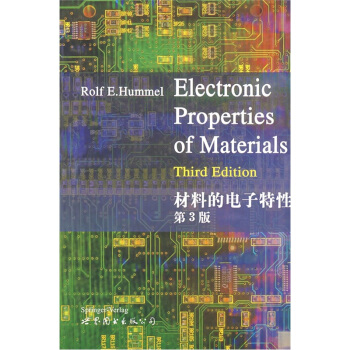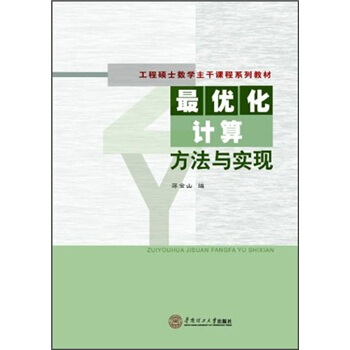

具体描述
内容简介
Books are seldom finished. At best, they are abandoned. The second edition of "Electronic Properties of Materials" has been in use now for about seven years. During this time my publisher gave me ample opportunities to update and improve the text whenever the book was reprinted. There were about six of these reprinting cycles. Eventually, however, it became clear that substantially more new material,had to be added to account for the stormy developments which occurred in the field of electrical, optical, and magnetic materials. In particular, expanded sections on fiat-panel displays (liquidcrystals, electroluminescence devices, field emission displays, and plasma displays) were added. Further, the recent developments in blue- and green-emitting LED's and in photonics are included. Magnetic storage devices also underwent rapid development. Thus, magneto-optical memories, magneto-resistance devices, and new magnetic materials needed to be covered. The sections on dielectric properties, ferroelectricity, piezoelectricity, electrostric-tion, and thermoelectric properties have been expanded. Of course, the entire text was critically reviewed, updated, and improved. However, the most extensive change I undertook was the conversion of all equations to SI-units throughout. In most of the world and in virtually all of the interna-tional scientific journals use of this system of units is required. If today's students do not learn to utilize it, another generation is "lost" on this matter.In other words, it is important that students become comfortable with SI units.目录
Preface to the Third EditionPreface to the Second Edition
Preface to the First Edition
PART I Fundamentals of Electron Theory
CHAPTER 1 Introduction
CHAPTER 2 The Wave-Particle Duality
CHAPTER 3 The Schrodinger Epuation
CHAPTER 4 Solution of the Schrodinger Epuation for Four Specific Problems
CHAPTER 5 Energy Bands in Crystals
CHAPTER 6 Electrons in a Crystal
Part II Electrical Properties of Materials
CHAPTER 7 Electrical Conduction in Metals and Alloys
CHAPTER 8 Semiconductors
CHAPTER 9 Electrical Properties of Polymers,Ceramics,Dielectrics,and Amorphous Materials
PART III Optical Properties of Materials
CHAPTER 10 The Optical Constants
CHAPTER 11 Atomistic Theory of the Optical Properties
CHAPTER 12 Quantum Mechanical Treatment of the Optical Properties
CHAPTER 13 Applications
PART IV Magnetic Properties of Materials
CHAPTER 14 Foundations of Magnetism
CHAPTER 15 Magnetic Phenomena and Their Interpertation-Classical Approach
CHAPTER 16 Quantum Mechanical Considerations
CHAPTER 17 Applications
PART V Thermal Properties of Materials
CHAPTER 18 Introduction
CHAPTER 19 Fundamentals of Thermal Properties
CHAPTER 20 Heat Capacity
CHAPTER 21 Thermal Conduction
CHAPTER 22 Thermal Expansion
Appendices
Index
前言/序言
用户评价
与其说这是一本教材,不如说它是一部关于“信息载体”演化史的深度剖析,完全跳出了传统固体物理的框架。这本书对于电磁波在介质中的传播,尤其是非线性光学效应的论述,非常具有启发性。作者对德鲁德模型、洛伦兹模型,乃至更复杂的Kohn-Sham理论的引入和比较,提供了一个多维度的视角来理解材料对光的响应。书中关于光电导、光致发光效率的讨论,不仅涉及到了量子效率的计算,还深入探讨了载流子弛豫时间与材料微观结构之间的复杂关联。最让我印象深刻的是对电子-声子相互作用的详细解析,这部分内容解释了为什么材料的导电率会随着温度变化而呈现出特定的趋势,揭示了能量耗散的根源。这种对“电”和“磁”的综合理解,远远超出了对普通导体或绝缘体的基础认知,它真正搭建了从量子力学到宏观电磁响应的完整桥梁,让读者能以更全局的视野看待材料的功能性。
评分说实话,拿到这本《材料的电子特性(第3版)》,我起初还有点担心它是否会过于理论化,毕竟很多教材在追求精确性的同时,牺牲了可读性。然而,这本书的编排结构非常巧妙,它采用了“从宏观现象到微观机理”的渐进式讲解方式,让人感觉每一步的深入都是自然而然的。比如,书中对介电常数和铁电性的介绍,不是简单地给出公式,而是从宏观的电极化现象入手,逐步引入居里-外斯定律,最后深入到晶格结构中的偶极矩和畴壁行为。这种叙事节奏感极强,让学习曲线变得平滑。另外,书中还穿插了一些非常精彩的历史背景介绍和经典实验的重构分析,这让原本抽象的物理概念充满了人情味和历史的厚重感。对于像我这样,更偏爱应用和实验验证的读者来说,这种理论与实践的平衡处理,是这本书最大的亮点之一。它不只是告诉我“是什么”,更重要的是告诉我“为什么是这样”,以及“如何通过实验去验证”。
评分这本书的详尽程度,用“百科全书式”来形容或许都不为过,尤其是在处理缺陷工程和电子输运的非理想情况时,展现了作者深厚的功底。我惊喜地发现,它并没有回避那些在教科书中常常被一带而过的复杂主题,比如位错、间隙原子、点缺陷如何充当散射中心,以及这些缺陷对材料的导电性能和光谱特性的决定性影响。作者对统计力学在电子系统中的应用讲解得尤为透彻,对玻尔兹曼输运方程的推导和应用场景的分析,简直是教科书级别的示范。我尤其关注了书中关于多铁性和磁电耦合效应的最新进展部分,那种对不同晶体对称性和电磁场相互作用的细致建模,让我对设计下一代智能传感器的可能性有了更清晰的认识。阅读过程中,我感觉自己仿佛置身于一个高级研究生的研讨会中,周围的都是该领域的顶尖专家,他们正在用最精确的语言探讨最前沿的问题。尽管需要反复查阅后面的附录来梳理复杂的张量表示,但这正是学术深度所必须付出的代价。
评分我对这本书的学术严谨性和对现代材料科学交叉领域的整合能力深表赞赏。第三版的更新非常及时,它不仅保留了经典理论的坚实基础,更引入了大量近十年内新兴的研究热点,比如拓扑绝缘体和超导电性的基础物理解释,这使得这本书的生命力得以延续。作者在处理复杂概念时,会适时地提供直观的比喻和类比,这对于避免读者在知识的海洋中迷失方向至关重要。例如,他对晶体动量守恒的解释,就巧妙地结合了火箭发射时的动量转移,虽然看似简单,却能瞬间理清复杂的物理图像。此外,书中包含的丰富习题集,难度梯度设置合理,从基础概念的巩固到复杂问题的分析,层次分明,非常适合用于自学和深入研究。可以说,这本书是我书架上少有的那种,每隔一段时间拿出来重读,总能发现新的理解亮点的宝藏级别读物。它为任何想在材料电子学领域深耕的人,打下了无可撼动的理论基石。
评分这本《材料的电子特性(第3版)》的深度简直让人叹为观止,我感觉像是经历了一次对物质微观世界的史诗级探险。作者的叙述方式极其严谨,特别是对量子力学基础概念的阐释,完全没有那种教科书式的枯燥。他巧妙地将复杂的薛定谔方程与实际的晶格振动、电子能带结构联系起来,读起来丝毫没有隔阂感。我特别欣赏其中关于半导体物理的章节,那种对费米能级、载流子输运机制的层层剥离,清晰到仿佛我能亲手操作霍尔效应实验。书中对新型二维材料,比如石墨烯和过渡金属硫化物在电子器件中的潜在应用的讨论,更是紧跟前沿,让人对未来的电子技术充满遐想。尽管内容涉及大量数学推导,但每一步的物理图像都描绘得非常到位,这使得即便是初次接触能带理论的读者,也能在理解数学框架的同时,把握其背后的物理意义。这本书绝不仅仅是一本参考手册,它更像是一本引领思考的指南,激发了我对材料科学更深层次的好奇心。我必须承认,消化完这本书中的每一个细节,都需要极大的耐心和专注,但收获的知识广度和深度绝对值得这份投入。
评分很多页重影。。。但是发现的时候已经过了售后服务期,恼火
评分课程教材课程教材课程教材课程教材
评分送的很快!!书的质量不错!!...
评分很多页重影。。。但是发现的时候已经过了售后服务期,恼火
评分认真读好书
评分卓yue上面的原版太贵了,影印好多了。
评分内容很系统,由浅入深,安排的很好,还和具体的实例相联系,只是影印的质量略差。
评分开卷有益处,不忘送书人
评分这本书写了材料的物理性质,光、电、磁、热等性质写得很清楚,像这样的教材,国内很少,虽然是英文版的,英文词汇不难,读起来不是很困难,建议用到的朋友出手买。
相关图书
本站所有内容均为互联网搜索引擎提供的公开搜索信息,本站不存储任何数据与内容,任何内容与数据均与本站无关,如有需要请联系相关搜索引擎包括但不限于百度,google,bing,sogou 等
© 2025 book.cndgn.com All Rights Reserved. 新城书站 版权所有












![高等院校师范类专业系列教材:数学教学设计与案例分析 [Mathematics Teaching Design and Case Analysis] pdf epub mobi 电子书 下载](https://pic.qciss.net/10949958/732d8374-0446-4562-be89-b6aa035005cd.jpg)







![中国区域海洋学:生物海洋学 [Regional Oceanography of China Seas:Biological Oceanography] pdf epub mobi 电子书 下载](https://pic.qciss.net/11037136/rBEIC1ADv6wIAAAAAADKL4ayKbQAAEBvwMfIh8AAMpH472.jpg)